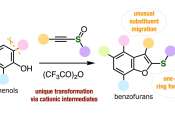Solar thermal process produces cement with no carbon dioxide emissions
(Phys.org) -- While the largest contributor to anthropogenic greenhouse gas emissions is the power industry, the second largest is the more often overlooked cement industry, which accounts for 5-6% of all anthropogenic CO2 ...









